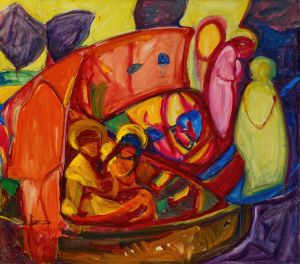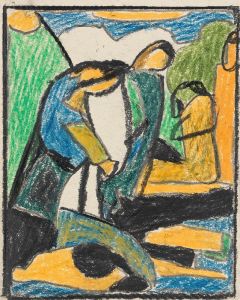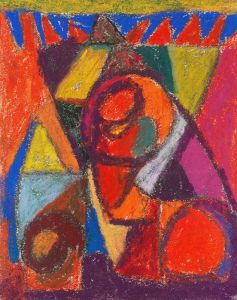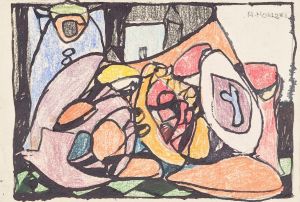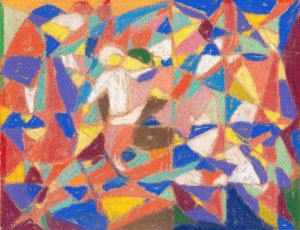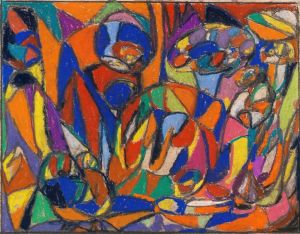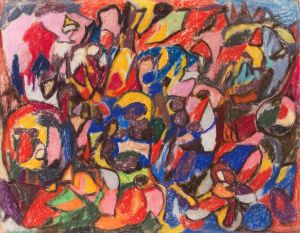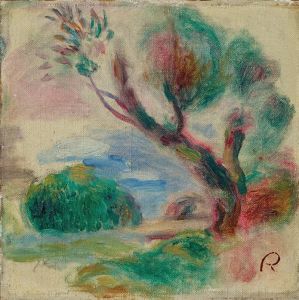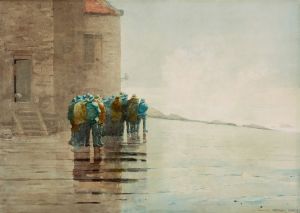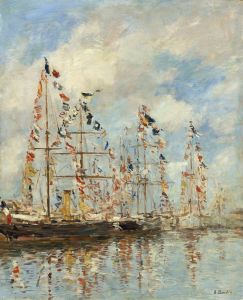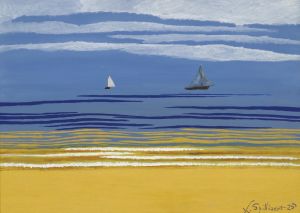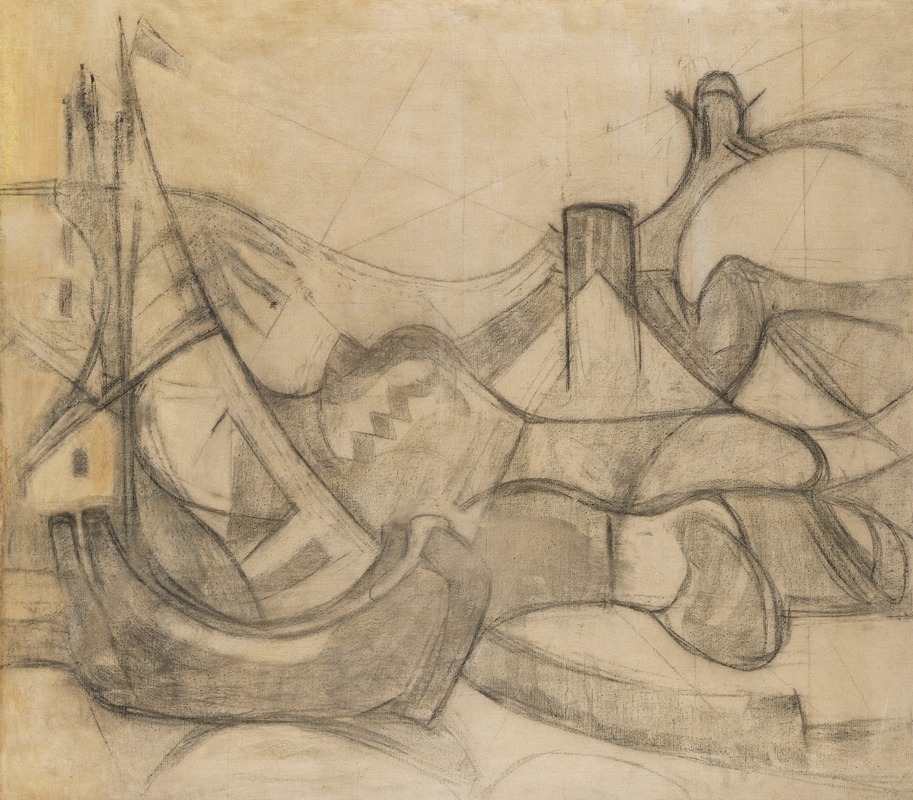
Segelboote vor Knokke
A hand-painted replica of Adolf Hölzel’s masterpiece Segelboote vor Knokke, meticulously crafted by professional artists to capture the true essence of the original. Each piece is created with museum-quality canvas and rare mineral pigments, carefully painted by experienced artists with delicate brushstrokes and rich, layered colors to perfectly recreate the texture of the original artwork. Unlike machine-printed reproductions, this hand-painted version brings the painting to life, infused with the artist’s emotions and skill in every stroke. Whether for personal collection or home decoration, it instantly elevates the artistic atmosphere of any space.
"Segelboote vor Knokke" (Sailboats off Knokke) is a painting by the German artist Adolf Hölzel. Adolf Hölzel, born on May 13, 1853, in Olmütz, Moravia (now Olomouc, Czech Republic), and died on October 17, 1934, in Stuttgart, Germany, was a significant figure in the development of modern art in Germany. He was a painter, art teacher, and theoretician, known for his contributions to the transition from Impressionism to abstract art.
Hölzel began his artistic education at the Academy of Fine Arts in Vienna and later continued his studies at the Academy of Fine Arts in Munich. He was influenced by the Impressionist movement and the works of artists such as Claude Monet. Hölzel's early works often depicted landscapes and scenes from nature, characterized by a focus on light and color.
"Segelboote vor Knokke" is one of Hölzel's notable works, capturing the serene and picturesque view of sailboats off the coast of Knokke, a seaside resort in Belgium. The painting is an example of Hölzel's ability to blend naturalistic representation with an emerging interest in abstraction. The composition features sailboats gently floating on the water, with the horizon and sky creating a harmonious backdrop. The use of color and light in the painting reflects Hölzel's Impressionist influences, while the simplified forms and emphasis on geometric shapes hint at his later move towards abstraction.
Throughout his career, Hölzel was not only a prolific painter but also an influential teacher. He taught at the Academy of Fine Arts in Stuttgart, where he mentored several prominent artists, including Oskar Schlemmer, Willi Baumeister, and Johannes Itten. Hölzel's teaching emphasized the importance of color theory, composition, and the spiritual aspects of art, which had a lasting impact on his students and the development of modern art in Germany.
Hölzel's theoretical writings and teachings contributed to the foundation of the Stuttgart School, which played a crucial role in the evolution of abstract art in the early 20th century. His ideas on the autonomy of color and form were ahead of his time and influenced the Bauhaus movement and other avant-garde art movements.
"Segelboote vor Knokke" exemplifies Hölzel's transition from traditional landscape painting to a more abstract and modernist approach. The painting is appreciated for its delicate balance between representation and abstraction, showcasing Hölzel's innovative use of color and form. It remains an important work in the study of Hölzel's artistic development and his contribution to modern art.
Adolf Hölzel's legacy is preserved through his artworks, teachings, and writings, which continue to be studied and admired by art historians and enthusiasts. His influence on the progression of modern art and his role as a pioneer of abstraction make him a significant figure in the history of art.






